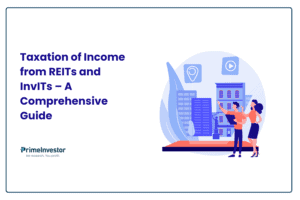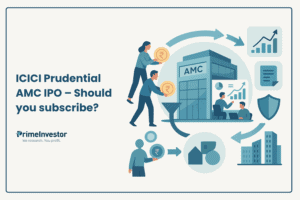For stock market investors, there are two kinds of years. Those which make us richer, and those which leave us poorer, but wiser. 2024 was clearly the second kind. After the easy riches of 2023, eccentric markets in 2024 foxed both newbies and grey-haired veterans. Here’s what I personally learnt this year.

Hedging can be a pain
When 2024 dawned, the investing community was split into two warring camps. The newbie camp, consisting of folks who’ve bought enthusiastically into stocks and mutual funds since Covid, believed that skies were blue and no cloud could appear on the horizon to interrupt their dream run. After all, what could go wrong when India’s GDP was zooming along at 8% plus, foreign investors were in TINA (There is no alternative) mode and the market-friendly Modi government was set to get re-elected?
Eyeing these folks with scorn were old warhorses, who’ve seen similar blue-sky scenarios before and were sure that so much optimism in the air could only mean disaster ahead. They looked at Lok Sabha elections and the July budget as major event risks that could throw nasty surprises and trigger a 20-30% market crash. They felt Nifty valuations sorely needed to be reset from the lofty 22-23 times (January 2024) to the long-term average of 17-18 times.
I was in the second camp, though I thought that the correction would not be too deep (I wrote about this in this report). The undiminished euphoria I saw around me in January made me believe that the market was primed for a valuation reset.
I decided to hedge against this risk by reducing my equity allocations from over 70% to 55%. I booked profits on some equity funds and stocks, parking the cash in FDs and rebalancing some to long-duration debt funds. I also decided to hedge my long-term portfolio by buying Nifty and Nifty Select Midcap Puts.
But as poet Robert Burns warned us, our best-laid plans often go awry. The market in 2024 managed to frustrate both optimists and pessimists. Newbies must have been disappointed that, after a 8-9% setback in the last three months of the year, the Nifty50 barely got to a 12% return by December 2024, after the 21% gain in 2023. They may also be vexed with the market’s drunken meanderings in the run-up to the New Year.
But the veteran camp was if anything even more disappointed, because the market simply did not oblige them with a ‘crash’. The Nifty 50, after flirting with a 8-9% decline a few times, has fought shy of breaching the 23k mark, playing hide-and-seek with investors trying to bottom-fish.
So far, the lack of material correction and the hefty capital gains tax I had to shell out, have made my cash calls look quite futile. I am waiting for deeper cuts either in the market or in specific stocks, to deploy my cash. But this is proving tricky, as it is hard to call if every market pullback is a new rally or a dead-cat bounce.
I have made some money on my index Puts. But after obsessively tracking my F&O positions during the volatile budget and election sessions and trying to play fastest-finger-first to exit at the right time, I felt the exercise surely wasn’t worth the time and BP I expended on it.
I would have been better off using the time to research companies I always wanted to own and adding to my buy list for bear markets. Only the move to rebalance to long duration debt worked out well, yielding a 13% annualized gain.
These experiments left me with three valuable lessons in my journey as a long-term equity investor.
- Stay invested through storms: If you are a long-term investor, it is better to simply sit tight through corrections and not try to hedge against short-term volatility, even if you can see it coming. Both cash calls and derivative hedges force you to waste time in gauging market direction. You would be better off spending this time preparing a shopping list of quality stocks to buy.
- Focus like Arjuna: Most of us have a full-time profession which is not investing. This leaves us with limited band-width to manage our portfolios. This requires us to be selective about the money-making opportunities that we participate in. No matter what’s happening in the markets, try to keep an Arjuna’s eye (as the ex-RBI governor would like to say 😊 ) on your long-term holdings.
- Have a clear plan for re-entry: Booking profits on your equity holdings when markets are over-heated is the easy part. The tough part lies in redeploying that cash so that you don’t miss out on compounding. If you book profits to take money off the table or rebalance, have a very clear plan on the Nifty levels or individual stock valuations at which you will re-enter markets.
You can’t predict triggers
At the beginning of the year, seasoned folks were sure that they could see the triggers to a market correction a mile away. Either it could be an unexpected result from the general election or it could be a disappointing budget, they said.
As it turned out, the election results did throw up a narrower victory margin for the NDA. The budget was negative with hikes in capital gains tax and no personal tax sops. But the markets corrected only fleetingly on these two triggers.
When the real correction arrived, it came from an unexpected source – a Foreign Portfolio Investor (FPI) exodus from India starting end-September. The narrative that domestic retail money could counter-act any amount of FPI selling was proved false too. Domestic institutions have struggled to provide a floor to the indices in the last three months.
After FPI selling surfaced, many interesting theories have cropped up about why they are in sell mode. One says that FPIs are reallocating to China because of its ultra-low valuations, another posits that FPIs are taking money back to their home markets in the US because of the Trump victory. Others say FPIs are put off by India’s high valuations. But the truth is that we really don’t know what made the FPIs pull the plug on India. It follows that we also don’t know what will woo them back to their TINA days. That brings me to lessons 4 and 5.
- Skip crystal-ball gazing: You can never predict the triggers for a market fall or a bull run in advance. This makes it doubly futile to take cash calls or hedges in anticipation of events. Prudent asset allocation is the only way to deal with unexpected market moves.
- Beware Expert Hindsight: Treat all clever-sounding macro explanations for market moves with a bucketful of salt. Despite Chinese markets trading at half of India valuations, no expert predicted in their 2024 outlook that FPIs would flee India for China. Post-facto explanations for market moves are just guesses and your guess is as good as anyone’s. Therefore, if you are spending a lot of time tracking FOMC moves, Trump/Elon tweets or Chinese markets for cues to FPI action, abandon this exercise and stick to bottom-up research on Indian companies and stocks.
Small/mid-caps defy odds
When 2024 began, the media was full of warnings about over-heated small and mid-caps. Investors were told to take shelter in large-caps, as ‘shaky’ small and mid-cap names would take a bad drubbing in a market fall.
But as it turned out, they were wrong. Coffee-can favourites like Asian Paints (down 30% in the last three months), Hindustan Unilever (down 23%) and Nestle (down 20%) have done much worse than obscure mid and small-caps in the recent correction, underperforming markets 2X. Eternal favourites like Reliance Industries and Adani Ports are down 18% too.
On the other hand, much-reviled new-age stocks such as One97/Paytm (up 51%), high PE stocks such as Dixon Tech (up 25%) and pharma plays like Caplin Point (up 26%) – all from the small-cap space – have delivered big gains.
These are not isolated cases of small and mid-caps outdoing bluechips. The Nifty50 and Nifty100, which were touted as safe harbors at the beginning of the year due to reasonable valuations, have lost much more value than the Nifty Midcap150 and Nifty Smallcap 250 index in the last three months.
Market cap buckets have not behaved in a textbook fashion because in India, large-cap stocks have very different drivers from mid and small-caps, because of their widely different ownership patterns.
FPIs are the main stakeholders in index and large-cap names and their selling has taken the wind out of the sails of these stocks. But domestic institutions and retail investors dominate shareholding patterns in mid- and small-caps and these investors have so far retained their faith in the India story, even as FPIs have sought greener pastures elsewhere. This has lent resilience to mid- and small-caps.
It is very difficult to say at this juncture if FPIs will return to India in big numbers, triggering a rebound in large-caps; or whether a continued barrage of FPI selling will undermine domestic investor faith in markets and thus trigger declines in mid- and small-caps. This leads me to lesson 6.
- Stick to your market cap mix: Many financial advisors ask you to stay away from small-caps and mid-caps and to stick with large-caps when markets are volatile, to ‘protect’ your portfolio. But seldom do they alert you to a good time to buy small-caps. Trying to make tactical shifts between market-caps can lead to missed opportunities. Instead, maintain a fixed allocation based on your risk appetite, between small-caps, mid-caps and large-caps. Don’t alter this based on market conditions. You can rebalance them when their proportion deviates significantly from your original allocation. This will automatically allow you to book profits, without reducing exposure from your intended allocation.







28 thoughts on “My market memoirs 2024: Lessons from being Wrong”
When you wait for deeper cuts either in the market or in specific stocks, to deploy cash, is that not timing the market trying to predict market moves in advance?
It is timing in a sense. But I go by valuations and not how I expect market to move. I use asset allocation to reduce risk. My equity exposure varies from 50-70% with debt at 20-40% and gold/silver at 10%. I usually reduce equity when I feel market valuations are too high.
Bravo Aarati. excellent reflection and succinct recommendations through your own journey. Wishing you and the Prime investor team a great year ahead. Look forward to learn about the arts & science of investment journey from experts like you. Thanks
Thank you!
An article to treasure and re-read every now and then
Very nicely articulated by Aarati Krishnan as usual and at the right time in the beginning of new year.
Thank you
Good to see a straight post of what you went thru Aarati.
My own learning, it’s always a challenge to figure out the real sound from the noise. So my philosophy is to stay “actively quiet” for most of the times. The other one – stay diversified (some of my perspective is very different on that even compared to all the learned investing gurus including youself. I respect them all, but love to stay diversified my way).
Thanks again for a good candid share. Wishing you an even more interesting 2025.
Thank you. That’s a good philosophy indeed 🙂
What’s your way of diversification?
There is a thesis floating around that active funds are better than passive due to the last 6 month volatility. Folks have started calling out that Fund managers are risk managers and their role is now critical
They can be better if they take good cash calls and manage to weed out governance risks (which indices don’t). But very few active mgrs succeed at this.
What confused me is ICICI Multi asset and HDFC Balanced Advantage have both given 16% in a year beating the Nifty 50. Hybrids were always considered inferior to pure equity like Nifty 50 but how come they did so well?
Must be because long duration gilts gave double digit returns matching the Nifty this year.
even their 12 year return is in the range of 15 to 16%. Makes me wonder that hybrids are not such a bad choice after all. I usually see folks recommend hybrids for new investors but 15% over 12 years is great. I am finding it very hard to get out of hybrid to pure equity funds like flexicap.
Yes their risk reward is much better.
Yes. I see PPFAS CHF has given 12.6% return in a year. They were just 15% into equity. So GSEC did the magic
Thank you for the nice article as usual Aarati. Its being said by everyone that large caps have taken the brunt of FPI selling compared to mid/small caps; is there any data to prove this? and who is buying the large caps that these FPIs are selling, are Indian MFs buying into these large caps now? Thank you.
Shareholding patterns show higher FPI ownership of largecaps and higher retail ownership of mid n smallcaps. My guess is the selling was absorbed by DIIs. But the selling is not large enough to materially change shareholding patterns.
Thank You.
“The market in 2024 managed to frustrate both optimists and pessimists” – best summary of the year.
only consolation is to know that even someone like yourself also faces difficulty in figuring out whether the pullbacks are real or fake.
Lesson 6 is actually gold! – takes out so much of the itch to buy/sell, greed/fear when you look at it this way.
Regarding – “Only the move to rebalance to long duration debt worked out well, yielding a 13% annualized gain.”
Have you written more on this elsewhere? more specifics of what was the logic and what you did?
Thank you 🙏 Yes have written more than one article on why long duration debt will work in 2024. The logic was that market yields would fall even if RBI didn’t cut rates. The article below was one instance. https://primeinvestor.in/reports/2024-debt-outlook-review/
Thanks. I had read this article. I had invested in two corp bond funds and I see annualized returns of only about 9%. So, curious to know whether the 13%* returns is from a bond fund or a NCD?
From constant maturity gilt fund.
Nice learnings relevant for all. In Essence what you are saying is just buy good businesses at right valuation and stick with them irrespective of where the Indexes are. Ignore macro pictures and predictions painted by Economists and Expert Analysts
Exactly. Also dont try to hold cash because you think markets will fall
Exactly. Also dont try to hold cash because you think markets will fall
Nice Article Aarati. As an afterthought reading the article, it seems simple/basics, but i agree with all your points. Thank you for the nice article.
Comments are closed.